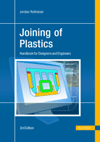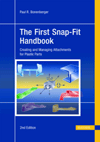Crimp force monitors allow wire harness assemblers to improve quality and boost productivity. The devices use a piezoelectric sensor to detect crimping forces. After reference crimps are made, each subsequent crimp is compared to the reference crimp and the specified tolerance, resulting in a good or bad output.
Several variables need to be evaluated and understood for successful use of a crimp force monitor (CFM). All CFMs come with base parameters that work for many applications. However, to create products with the highest quality and reliability, engineers, like chefs in the kitchen, need to ensure each ingredient in the process is properly prepared before sending it out to the assembly line. That’s the recipe for success.
Unfortunately, there is a widespread lack of understanding with what exactly to do with all the CFMs that many manufacturers are required to have. In fact, many CFMs are usually turned off, because engineers and operators are not using them properly.
It may be worth paying an unexpected visit to your crimping work area to look for indications of whether CFMs are being used. Chances are they are not. Unless, of course, it’s audit time; then you can be sure all the CFMs will be on.
Why are CFMs not being used regularly? One of the biggest problems is the lack of understanding of the variables affecting the CFM’s ability to detect variations.
Crimp quality detection is similar to baking a cake. There are a lot of ingredients and if one ingredient is missing or of bad quality, you likely are not going to achieve your desired result. Engineers should discuss the ingredients and variables that operators need to consider before switching off a CFM.
Numerous Benefits
First, there’s one basic concept that needs to be understood: “What can a CFM detect?” Crimp force monitoring will provide reliable detection of all general crimping errors during processing, including:
- Wrong strip length.
- Missing strands.
- Wrong wire cross section.
- Wrong terminal.
- Inconsistent terminal material.
- Insulation in wire crimp.
- Wrong insertion depth.
- Wrong crimp height.
Many people fail to realize that simply plugging in a CFM will not solve all their crimp quality issues. The main function of a CFM is to be a process monitor and to detect variations along the crimp force signature curve that are outside of the programmed tolerances. The CFM considers any variation outside of the programmed tolerance a bad crimp.
Operators must teach the CFM what to identify as a good or bad crimp through the teach-in process. This consists of running several crimps and manually verifying that the data associated with that crimp, such as crimp force and crimp height, is correct. The CFM then compares all future crimps to this data.
Therefore, in CFM terms, “bad” means the actual crimp curve is outside of the tolerance range that was defined from the known good crimps during the teach-in process. But, since this does not fit in the CFM’s display screen, it is simply called a bad crimp. Different applications require different CFM parameters and operators need to learn to interpret the feedback from the CFM to determine where the variation occurred and if that variation really constitutes a bad crimp.
Once an operator understands what is meant when a CFM detects a bad crimp, the variables that affect the crimp curve can be taken into account. There are many factors that can affect an application, and how much each variable affects the CFM’s ability to detect crimping problems varies.
Application feasibility is the most critical factor in the crimping process. Application feasibility is determined by “headroom,” which is the difference in the peak force required to crimp a terminal onto a wire vs. the peak force required to crimp a terminal when the wire is missing.
Headroom determines how hard the terminal is in comparison with the wire. Typically, headroom is between 30 percent and 40 percent. When these conditions are met, problems such as missing strands, strands over insulation and positioning issues can be easily detected.
Material type and hardness of the terminal is another big factor in determining the application headroom. The harder the terminal, the smaller the headroom and the more difficult it will be to detect other crimping problems.
The finish of the material also plays an important role, since some materials slide better on the crimping tooling than others. Some materials, such as gold, tend to build up on the tooling if not lubricated properly, thus having an impact on the crimp curve. The tolerance of the stock thickness of the terminal is important as well, because the CFM will detect a difference in thickness if it varies from the teach-in samples.
The correct combination of wire, terminal and seal is also critical to the crimping process. If the wire is too small or too large for the terminal and seal being used, the CFM will have have difficulty differentiating good crimps from bad ones.
Type and quality of the wire also need to be taken into account. It’s important that the wire has a good quality and consistency in its mass. Wire quality is one of the critical conditions, since 30 percent to 40 percent of the crimping force is required to form the strands into a gastight honeycomb geometry. If the copper mass varies too much throughout the wire, this will have a significant impact on the crimping force detection.
Strand count is also important, because monitors are typically only able to detect around 10 percent or more missing strands. Therefore, if the wire has seven strands, the CFM can detect one missing strand. On the other hand, in a 19-strand wire, two or more strands would need to be missing in order for the CFM to detect an error.
In addition, insulation plays a role in crimping force, although to a lesser degree. A cleanly stripped insulation allows for better force detection.
The applicator is also a critical factor in the crimping process. It’s important to use a well-lubricated and reliable applicator equipped with a good feeding mechanism and well-made tooling.
A press with good consistency that is statistically capable and well-maintained means repeatable force will be applied to the wire-terminal combination. Presses also have to be designed so that they can consistently flex enough for frame sensors to detect deflection and therefore the force applied. For ram- or base-installed sensors, this is also important, but to a lesser degree.
Wire preparation plays a key part in the crimping process. A well-prepared wire is required with consistent cut and strip dimensions and without damaged strands. Manually stripped wires have a greater chance for inconsistency and damage to the wire. Therefore, they will have a bigger impact on variability. To achieve the best results, an automatic cut and strip machine should be used.
Presentation is another variable to consider. For manually fed crimping presses, the operator must present a properly stripped and straightened wire consistently to the wire stop position before initiating a crimp cycle.
One factor that often goes unnoticed is temperature. Extreme temperatures or variations in the factory temperature throughout the day can have an effect on the CFM’s ability to detect variation.
The CFM itself can also have an effect on the data. Operators should know about the type of CFM and force sensor that’s being used. They should also be familiar with the positioning of the sensor.
Crimp force monitors are effective tools when all the factors affecting their performance are fully understood, their optimum conditions are met, and the influence of all the variables are taken into account. Paying close attention to these factors is the only way to achieve meaningful detection of crimping problems.
Interpreting the Data
Operators must learn to read the data they are given by CFMs and understand what it means. An operator must teach the CFM what to identify as a good or bad crimp. To do this properly, first-time crimping studies must be performed to determine the detection feasibility, taking into account all of the factors affecting performance.
Because operators usually have little say in determining what combination of wire and terminal to use, one of the best ways to effectively determine the capability of the application is through a thorough analysis before releasing tools and materials to the assembly line. The most important output from these analyses includes conductor crimp height capability process index (Cpk), pull-out force Cpk and micrograph analysis.
Performing these analyses before beginning wire harness assembly will provide valuable information about the correct combination of wire, terminal and crimp specs.
Once the quality of the equipment, materials and headroom is determined, the crimp zones need to be established. The easiest way to do this is by looking at the curve graph through a computer or the software in the equipment.
Some applications introduce unwanted equipment and terminal noise at the beginning and end of the crimping process, known as feeding noise. This is not critical to the crimping process and needs to be filtered out from the equation. Crimp zones should focus only on the actual crimp curve and need to be set on a CFM.
After unwanted noise is filtered out, then the averages of correctly crimped wires can be taken to determine the signature curve. Accomplishing this requires trial and error to determine how many missing wire strands a certain range will be able to determine as bad. Strands can be taken out of the crimp one at a time to determine the effect of the missing strands to the deviation from the signature curve.
Once completed, this will determine the CFM’s ability to detect the percentage of missing strands. After gathering all this data, the percentage tolerance from the mean curve of the known good crimps is determined.
Finally, documentation is important to determine process values for the correct terminal, wire, tool and CFM combination. Having these process values readily available and posted next to the crimping press or downloaded automatically into the machine’s software will ensure adherence to the process charts at all times and give valuable reference data for troubleshooting purposes.






